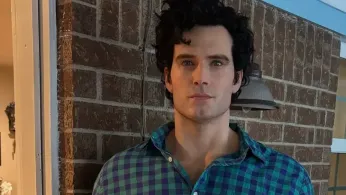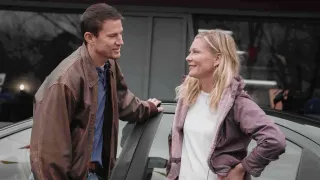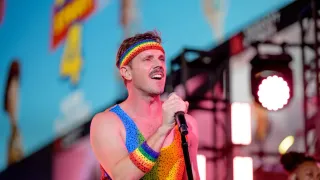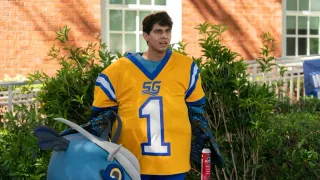
Oct 9
Life-Size Henry Cavill Silicone Doll Purchase Sends Texas Collector Viral
READ TIME: 3 MIN.
On October 8, 2025, news broke that an avid doll collector in Texas had acquired a unique addition to his home—a life-size, anatomically correct silicone doll modeled after the actor Henry Cavill, best known for his portrayal of Superman. The collector’s social media posts showcasing the hyper-realistic figure rapidly gained traction, first within niche collector circles and then across mainstream platforms, catapulting the story into the viral spotlight .
The doll, described as "anatomically correct but not a sex doll," was quickly differentiated by the collector and online commentators from products explicitly designed for adult purposes . Instead, the figure is positioned as a work of hyper-realistic artistry and a tribute to celebrity fandom.
Doll collecting is a well-established hobby, with communities spanning interests from historical figurines to modern pop culture icons. The Henry Cavill doll represents an evolution in the field: a blend of advanced manufacturing, celebrity culture, and digital-age fandom. While life-size silicone dolls have existed for years, the customization to resemble a real, living celebrity elevates both the artistry and the complexity of the collector’s motivations and public reaction .
The Texas collector, whose profile has soared in the aftermath of media attention, has been open about his passion for collecting realistic dolls. His social media posts highlight not only the craftsmanship of the Cavill figure but also the role such objects play in self-expression and identity formation. For many LGBTQ+ individuals, particularly those drawn to superhero narratives and pop icons, such collectibles can serve as affirming symbols of admiration and personal taste .
As news of the purchase circulated, responses ranged from amusement and admiration for the collector’s dedication to lively debate about the implications of celebrity likenesses in collectible form. Commenters on platforms such as Threads and Twitter debated the ethics and boundaries of replicating real people as hyper-realistic objects, especially when those objects are described as anatomically correct .
For some, the story was simply an entertaining example of fandom reaching new heights. For others, it sparked meaningful conversation about the line between admiration and objectification, especially as technology enables increasingly convincing reproductions of famous individuals .
Within the LGBTQ+ community, the viral moment was also celebrated as a playful assertion of queer interest in male beauty and superhero culture—a domain in which LGBTQ+ representation has historically been limited. Social media users highlighted the collector’s unapologetic approach to his hobby as emblematic of the freedom to express diverse desires and forms of admiration, particularly in spaces where such expressions have not always been welcome .
The incident underscores a growing trend in the collectibles industry: the demand for highly detailed, lifelike representations of pop culture figures. As technology advances, manufacturers are able to deliver products with unprecedented accuracy, blurring the lines between art, memorabilia, and personal fantasy. The Cavill doll’s viral fame may inspire other collectors and companies to explore similar offerings, potentially prompting further discussion about the ethical use of likeness rights and boundaries of personal and public admiration .
Meanwhile, the story has reignited conversations in LGBTQ+ media about the importance of representation—not only in the characters depicted by celebrities like Henry Cavill but also in the freedom to celebrate those idols in personally meaningful ways. The collector’s viral moment serves as both a lighthearted internet spectacle and a touchstone for broader dialogue about fandom, identity, and the ever-evolving landscape of LGBTQ+ visibility.






